Artificial Intelligence in Modern Contract Negotiations
By 2027, almost 50% of procurement organizations will use AI-powered contract risk analysis and editing tools to aid negotiations. What was previously reactive, and manual is rapidly becoming predictive and proactive.
Source: Gartner
Negotiation of contracts has been a point of contention in business relationships for ages.
Though creating a contract would logically be simple, the give-and-take of redlines, conflicting priorities, and fine print legal niceties typically holds up the process for weeks or even months.
That's when artificial intelligence is starting to change the game.
In this blog, we’ll explore how AI is reshaping contract negotiation, the risks and opportunities it introduces, and how platforms like Dock 365, built on Microsoft 365, can help organizations unlock efficiency without compromising control. This includes a closer look at how organizations are beginning to use AI-driven contract negotiation for complex procurement scenarios, an area where intelligent automation strengthens strategy rather than replaces human expertise.
Key Takeaways
- Context is king: Generative AI doesn’t just scan contracts, it interprets patterns, compares against industry benchmarks, and suggests improvements rooted in real-world precedents.
- Efficiency and foresight: In addition to drafting at lightning speeds, AI software also identifies risky language and assists legal teams in seeing around corners to foresee negotiation issues before they arise.
- Not perfect, but potent: AI-drafted clauses can be authoritative-sounding, but they also need expert vetting for enforceability and fairness.
- Governance is essential: Left unchecked, AI can reinforce historical agreement biases, which is why human oversight is crucial.
- Strategic advantage: By balancing accountability, generative AI transforms contract work from mechanical paperwork to a forward-thinking business strategy.
How Generative AI Fits into Today’s Contract Process
 Fundamentally, generative AI doesn't merely automate but creates.
Fundamentally, generative AI doesn't merely automate but creates.
Generative AI is different from legacy contract software, which primarily saves templates or indicates missing fields.
It is capable of writing language, proposing alternative clauses, and even adjusting tone based on context.
This is precisely what makes its function in the negotiation of contracts so unique.
To legal teams, this brings both strength and nuance. AI systems are trained on large datasets, so they can identify phrasing or precedent that would be easily missed by a human.
But the very expansiveness of this potential also raises questions.
How do you guarantee that a drafted clause is compliant with certain industry regulations, risk tolerances, or organizational policies? This is where real integrations come into play.
Microsoft Copilot, for instance, pushes generative AI functionality into the everyday applications of Word, Excel, and Outlook, places where most contracts already have life and exist.
Rather than requiring professionals to relearn an entirely new system, AI is added on top of the workflows they're familiar with, making contract writing and review more native and less jarring.
By using AI as a co-author, not only as a proofreader, organizations become equipped with the potential for faster, wiser, and more forward-looking negotiations.
Driven Smarter, data-backed agreements contracts have ever been the result of meticulous negotiation, but far too frequently they are based on precedent and instinct rather than concrete evidence.
Generative AI is helping to shift that paradigm by adding a layer of data-based intelligence to the drafting and examination process.
Rather than beginning from a blank page or relying too heavily on template language, legal teams can now draw on expertise gleaned from thousands of past contracts.
This evidence-based strategy assists negotiators in determining which provisions cause conflict, which phrases are standard across industries, and where give-and-take has yielded better relationships in the past.
For instance, if liability limits tend to settle within a specific percentage band, AI can point out that benchmark in real-time.
Instead of prolonging back-and-forth dialogue, negotiators are equipped with facts that streamline consensus.
The benefit goes beyond productivity.
Recommendations powered by data can also aid organizations in aligning contracts with overall business objectives.
A procurement team, for example, might want to optimize for supplier robustness, whereas a sales team will need to prioritize more rapid deal closure.
AI can examine past agreements to uncover patterns that achieve both objectives, providing substitute clauses that reduce risk without hindering negotiations.
In doing so, contracts move from fixed papers to dynamic tools of strategy driven by not only legal accuracy but by measurable results.
Through the translation of negotiation as a process driven by hard evidence from the real world rather than hypotheses, AI not only accelerates, it elevates the quality and credibility of each agreement.
How AI Helps Create More Balanced Negotiations
 Perhaps one of the most exciting contributions of AI to contract management is its potential for promoting fairness.
Perhaps one of the most exciting contributions of AI to contract management is its potential for promoting fairness.
Early discussions tended to focus on the dangers of bias, but it's just as valuable to see how AI can cut back on one-sidedness and generate more equitable results.
Negotiations tend to swing in the direction of the more resourced or better-bargaining party.
Smaller organizations can feel pushed into agreeing to poor terms just to get the deal done.
AI evens the playing field by examining market norms and revealing clauses that mirror wider industry practice.
Rather than having to negotiate blind, under-resourced teams are exposed to the same information once the sole preserve of large legal departments.
AI can identify language that strays a long way from past agreements, so that no party is unintentionally bound by terms that are off-stream from accepted conventions.
In supplier contracts, for example, this could involve identifying unusually onerous penalty terms or identifying indemnities that are outside what is normally enforceable.
By bringing these outliers to the surface, AI allows negotiators to negotiate terms that are reasonable, defensible, and win-win.
Notably, fairness is not about removing strategic advantage.
Rather, it is about making sure that all contracts are an honest exchange of risks and rewards.
The organizations that approach this attitude are not only decreasing conflict, but they are also creating stronger, more lasting relationships with their partners.
Humans and AI Working Together
AI has succeeded in expediting contract negotiations, but speed is different from wisdom.
The real frontier is not in supplanting human negotiators, but in establishing a symbiotic relationship wherein AI and lawyers complement each other's strengths.
For teams handling high-value deals, exploring AI contract negotiation for complex procurement provides a structured way to combine automated insights with expert judgment, ensuring better outcomes without sacrificing control.
Contracts, particularly those of high-stakes transactions, are seldom straight lines.
-Photoroom.webp?width=400&height=400&name=Untitled%20design%20(2)-Photoroom.webp) They comprise complex trade-offs, implicit word selection, and comprehension of cultural and commercial context, spheres in which human judgment continues to be supreme.
They comprise complex trade-offs, implicit word selection, and comprehension of cultural and commercial context, spheres in which human judgment continues to be supreme.
All that AI has to offer is accuracy and volume. It can scan hundreds of pages in an instant, mark risk-favoring clauses, compare terms against industry benchmarks, and even suggest substitute wording.
This minimizes the drudgery and provides the negotiators with more refined insights.
But it is the human counterpart who makes sense of those insights, matches them against larger business imperatives, and works out solutions that are compromised on law, ethics, and strategy.
This partnership is particularly important at the "edges" of the negotiation, where precedent gives little clear guidance.
AI may find patterns, but it lacks the emotional intelligence needed to understand a counterparty's intention, or the vision to architect innovative deal terms that break out of templates.
In going past the redline, organizations aren't simply making negotiations quicker, they're making them more intelligent, fair, and in the end, more human.
Preparing for Change in Contracts
The contract negotiation table of tomorrow will look very different from today’s.
As generative AI cements its role in drafting and redlining, regulators are racing to catch up.
Around the world, governments are already drafting frameworks to govern AI’s use in sensitive domains like law, finance, and healthcare.
For organizations leveraging AI in contract negotiation, this means preparing for a patchwork of compliance obligations, from disclosure requirements to restrictions on fully automated decision-making.
Meanwhile, the technology itself is changing at breakneck speed. AI models become increasingly context-sensitive, able not only to propose clause amendments but comprehend the strategic purpose for which they are intended.
Integration with corporate ecosystems like Microsoft 365 or ERP systems will make negotiation processes seamless, bringing in real-time information on performance, risk, and compliance.
These technologies would change contracts into living documents that constantly update in response to shifting business conditions.
But with risk comes responsibility. The firms that will succeed will be those that get ahead of regulatory requirements, spend on explainable AI, and establish governance mechanisms that guarantee technology is serving human judgment, not vice versa.
With AI, the uncertainty is no longer just about the game's rules but also about the rules of the game itself.
Looking Ahead with AI in Contracts
 Generative AI is no longer a far-off experiment, it is already transforming the drafting, review, and negotiation of contracts.
Generative AI is no longer a far-off experiment, it is already transforming the drafting, review, and negotiation of contracts.
The successful organizations in this shift will be those that implement AI as an amplifier of human knowledge, not as a substitute for legal judgment.
It's about transitioning from laborious drafting and reactive risk management to a future where intelligence, efficiency, and foresight are integrated into every clause.
This is already happening through AI capabilities such as Microsoft Copilot, which has seamless integration into well-known Microsoft 365 applications.
To legal and procurement teams, this translates into AI-powered insights able to feed directly into Word, Outlook, and SharePoint without altering established workflows.
And when paired with a committed contract management solution such as Dock 365, organizations have an additional benefit: a single system that leverages AI, automation, and co-working to provide secure, compliant, and future-proof contract management.
By using AI as a trusted collaborator, companies can tackle complexity with transparency, negotiate more effectively, and safeguard their interests with accuracy.
Schedule a free demo with Dock 365 today and discover how contract management via AI can revolutionize your negotiation process.
Like our content? Subscribe to our newsletter on LinkedIn for more insights and updates.
Book a Live demo
Schedule a live demo of Dock 365's Contract Management Software instantly.

Written by Jithin Prem


